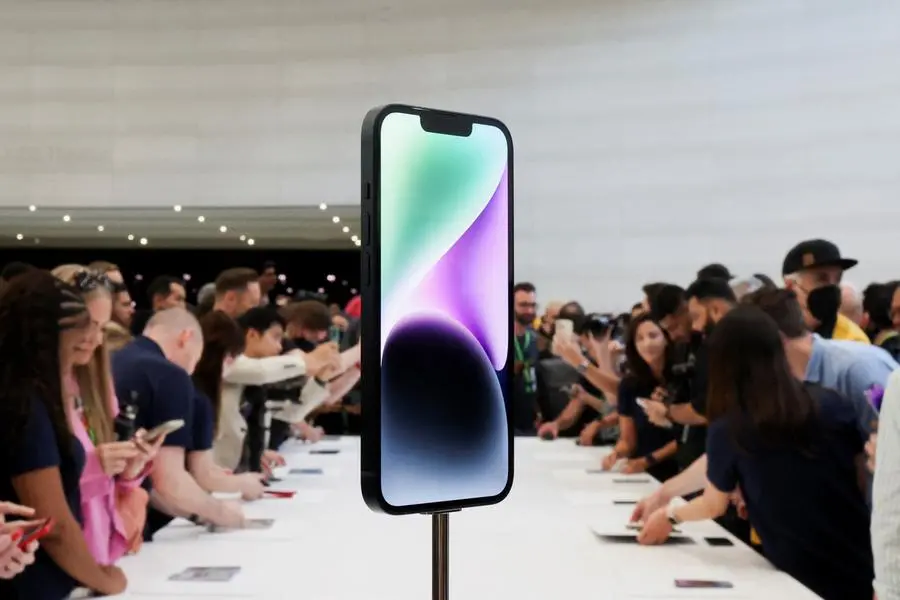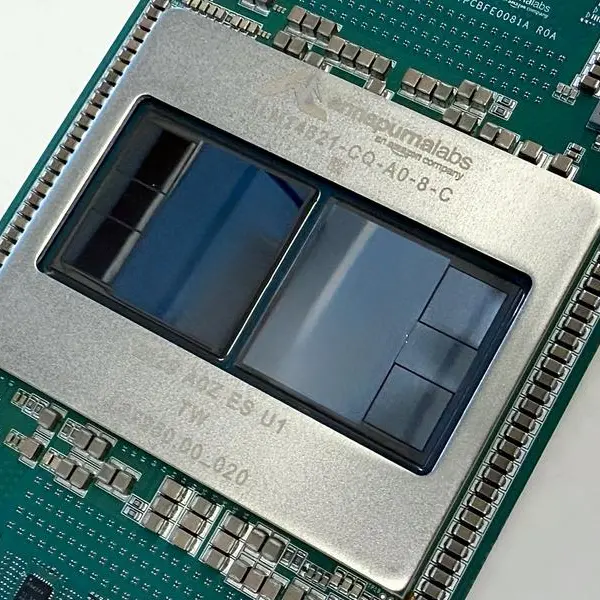PHOTO
Apple officially launched the iPhone 14, iPhone 14 Plus (with a more expansive 6.7-inch screen), and the much-hyped Pro model phones in the series on Wednesday.
The devices were unveiled during an in-person event at Apple Park in Cupertino, the first one of its class post-pandemic. The event itself lived up to its usual standards, turbo-charged with the collective energies of over a thousand tech geeks, Apple super fans, content creators, and some serious writers.
Apple revealed the devices and wearables in a typical Apple aesthetic – sleek and functional. Some of us wish Apple CEO Tim Cook could have hung out on stage and interacted with the audience a bit longer. The entire show was pre-recorded.
1. iPhone 14 Pro and iPhone 14 Pro Max
Let’s talk about the most exciting features on the devices starting with brand new features on the Pro models, including a dynamic island, crash detection, an emergency SOS calling service via satellite, and the first-ever 48MP camera on an iPhone.
The iPhone’s notch has been replaced with a 'Dynamic Island', and the internet is not having it. Popular tech reviewer Marques Brownlee said, “Apple naming the pill cutout the ‘Dynamic Island’ is the most Apple thing they’ve Appl-ed ever.”
The 'Island' enables new ways to interact with iPhone, adapting in real-time to show important alerts, notifications, and activities.
With the introduction of 'Dynamic Island', the TrueDepth camera has been redesigned to take up less of the display area. It maintains an active state to allow users more accessible access to controls with a simple tap-and-hold.
Ongoing background activities like Maps, Music, or a timer remain visible and interactive, and third-party apps in iOS 16 that provide information like sports scores and ride-sharing with Live Activities can take advantage of 'Dynamic Island'. I feel it’s a sleek update, making it a creative way to make the pill notch feel more like part of the UI.
2. Crash detection
Crash Detection on iPhone can now detect a severe car crash and automatically dial emergency services when a user is unconscious or unable to reach their iPhone. A convenient tool.
The service is possible thanks to a new dual-core accelerometer capable of detecting G-force measurements of up to 256Gs and a new high dynamic range gyroscope. “These capabilities build on existing components, like the barometer, which can now detect cabin pressure changes, the GPS for additional input for speed changes, and the microphone, which can recognise loud noises typified by severe car crashes,” explained Apple.
The company said that the microphone is turned on only when driving is detected; Bluetooth, CarPlay, or speed can trigger this.
“All data is processed on the device and discarded after a crash event has been detected unless the user has opted into sharing their data to improve Crash Detection. Only the sound level is shared with Apple, not the raw audio,” explained the company, putting to rest privacy concerns.
The company's advanced motion algorithms trained with over a million hours of real-world driving and crash record data provide even better accuracy.
When a severe crash is detected, the emergency services call interface will appear on Apple Watch, as it is most likely closer to the user, while the call is placed through iPhone. However, there was no way to check this application at the product unveiling after the keynote. We have to take Apple's word for whether it works just fine.
3. Emergency SOS via satellite
A feature that top Apple experts predicted would be unveiled was the Emergency SOS via satellite. The system combines custom components deeply integrated with software to allow antennas to connect directly to a satellite, enabling messaging with emergency services outside of cellular or Wi-Fi coverage, explained Apple.
“Satellites are moving targets with low bandwidth, and it can take minutes for messages to get through. Since every second counts, with Emergency SOS via satellite, iPhone front-loads a few vital questions to assess the user’s situation and shows them where to point their phone to connect to a satellite,” it said.
The initial questionnaire and follow-up messages are then relayed to centres staffed by Apple‑trained specialists who can call for help on the user’s behalf. This technology also allows users to manually share their location over satellite with Find My when there is no cellular or Wi-Fi connection.
Emergency SOS via satellite will be available to users in the US and Canada in November, and the service will be free for two years.
4. New Class of Pro Camera System
iPhone 14 Pro takes computational photography even further with Photonic Engine, offering a giant leap for mid to low-light photo performance across all cameras through deep hardware and software integration.
For the first time, the Pro line-up features a new 48MP main camera with a quad-pixel sensor that adapts to the captured photo and features second-generation sensor-shift optical image stabilisation. The quad-pixel sensor also enables a 2x Telephoto option that uses the middle 12 megapixels of the sensor for full-resolution images and 4K videos with no digital zoom.
The quad-pixel sensor also benefits pro workflows, optimising for detail in ProRAW. And with a new machine learning model designed specifically for the quad-pixel sensor, iPhone now shoots ProRAW at 48MP with unprecedented detail.
Additional pro camera system upgrades and features include:
A new 12MP Ultra Wide camera with 1.4 µm pixels delivers sharper images with more detail, improving already powerful macro photography capabilities.
An improved Telephoto camera that offers 3x optical zoom.
A new front TrueDepth camera with an ƒ/1.9 aperture enables better low-light performance for photos and video. Using autofocus for the first time, it can focus even faster in low light and capture group shots from farther away.
A new Adaptive True Tone flash has been completely redesigned with an array of nine LEDs that change patterns based on the chosen focal length.
Powerful computational photography benefits like Night mode, Smart HDR 4, Portrait mode with Portrait Lighting, Night mode Portrait photos, Photographic Styles to personalise the look of every image, and Apple ProRAW.
A new Action mode for an incredibly smooth-looking video adjusts to significant shakes, motion, and vibrations, even when the video is captured in the middle of the action.
Cinematic mode is available in 4K at 30 fps and 4K at 24 fps.
Pro-level workflows for video, including ProRes3 and end-to-end Dolby Vision HDR.
5. No more SIM cards?
By the looks of it, yes. iPhone offers users super-fast downloads and uploads, better streaming, and real-time connectivity with 5G to help them stay in touch. Support for 5G on iPhone now extends to over 250 carrier partners in over 70 markets, with expanded support for standalone networks.
However, the SIM tray for US models of the iPhone 14 Pro and iPhone 14 Pro Max has been removed, enabling users to more quickly and easily set up their device.
eSIM allows users to connect or quickly transfer their existing plans easily, is a more secure alternative to a physical SIM card, and allows for multiple cellular plans on a single device. While this is an impressive update, the issue arises when a user needs to downgrade, for whatever reasons, to a phone with a SIM card tray. What happens, then?
Finally, the iOS 16 features have reimagined the Lock Screen along with new communication, sharing, and intelligence features that change how users experience iPhone.
The Lock Screen is more personal and has a multilayered effect that sets the subjects of photos in front of the time and newly designed widgets that offer information at a glance. I must add that this has been the case with Android devices for a few years.
iPhone 14 Pro and iPhone 14 Pro Max will be available in four new finishes: deep purple, silver, gold, and space black. Pre-orders begin Friday, September 9, with availability beginning Friday, September 16.
Copyright © 2022 Khaleej Times. All Rights Reserved. Provided by SyndiGate Media Inc. (Syndigate.info).





















